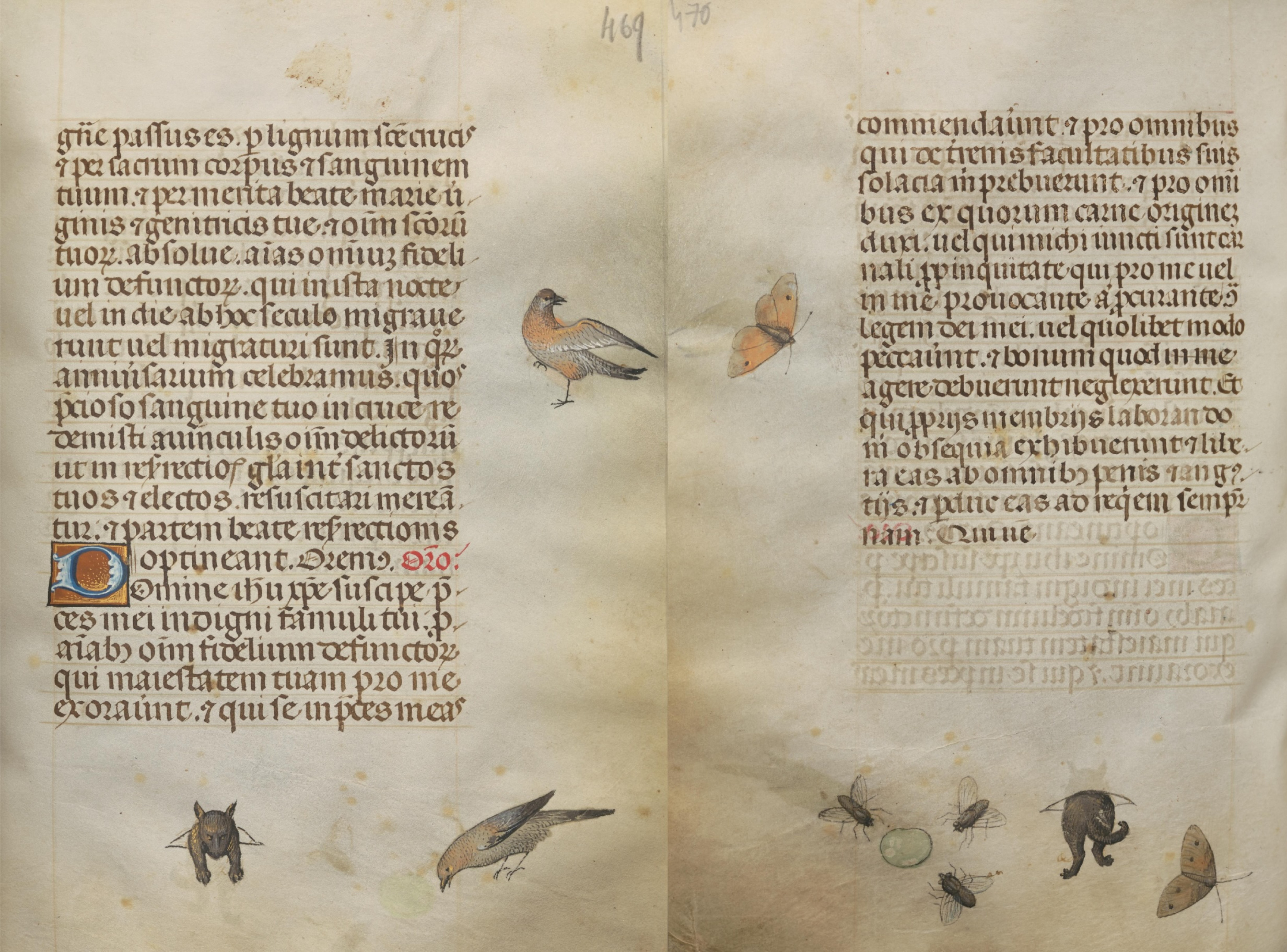Can you spot a little dog going out and in the manuscript? :)
When we open any page of a medieval prayer book, we notice first of all the compositions in the margins consisting of flowers and insects; there are random figurative scenes (called spiritelli in Italy) involving people, animals, and fantastic creatures. Flora and fauna are omnipresent in the borders; occupying the margins, they stand out as if mocking the primary role of text and miniatures.
The marginalia, when arranged in narrative sequences, seem to create a separate thread, independent of the figural decoration, preserved in the form of four full-page miniatures, as well as several dozen smaller figural initials of equally great beauty.
Several anonymous illuminators worked on the decoration of this prayer book in Ghent or Bruges around 1483, including the outstanding, unknown Berlin Master of Mary of Burgundy. Their work was an artistic experiment based on the virtuoso reproduction of reality, which manifested itself through fragments of nature shown in a naturalistic way, using illusionistic effects. Many pages of the manuscript were painted with wildflowers, referring to optical illusions (such as imitating a real herbarium); the reader who sees almost the entire plant on the recto page, after turning the page, sees only part of the plant's stem (the fragment by which it is attached to the supposedly cut parchment background). Let's not be deceived by illusion! Naturalism is intertwined with stylization, and the decoration was created in an illuminator's workshop using indirect materials: detailed drawings, design miniatures, and engravings.
What meaning is hidden in these fragments of nature scattered on the margins?
Traditionally, individual plant species (roses, lilies, carnations, columbine flowers, and pansies) were associated with devotional meanings, consistent with the function of the book. Regardless of this, painting decoration as a consciously innovative artistic creation emphasizes the mimetic possibilities of art, and due to the subject matter, it is the contribution of Dutch illuminators of the late 15th century to the emergence of still life as an independent painting genre.
We are sharing this beautiful page with you today thanks to the National Museum in Krakow, whose division, the famous Czartoryski Museum, has this book in its collection. Look at these dogs at the bottom! They are so lovely ... and do you know what? In our Animals in Art 50 Postcards Set, we have multiple depictions of cute animals in art! Check out the DailyArt Shop today—it is the last day of our Lunar New Year Sale! :)
P.S. The creatures depicted on the margins of medieval manuscripts were not always friendly. Have you seen these insane medieval killer rabbits?


 Unknown Artist
Unknown Artist